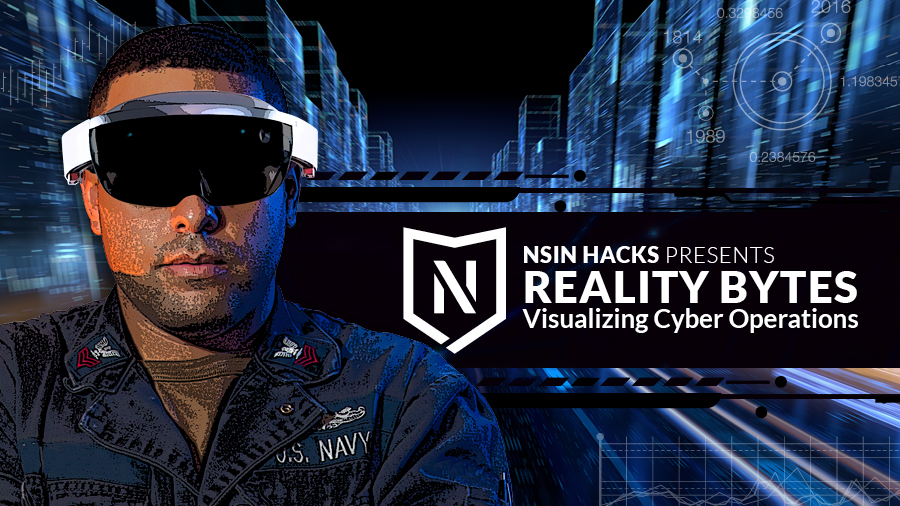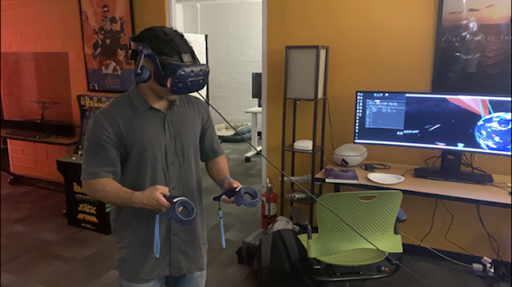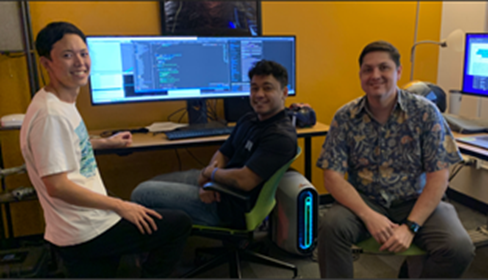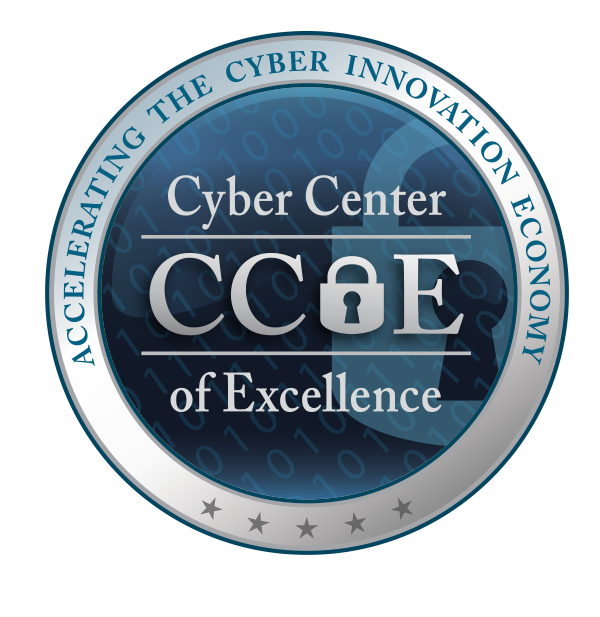
Advancing Cybersecurity with Gaming Tech

NSIN Hacks connects military problems with problem-solvers for a short, intensive period to work together to solve DoD problems. Teams work with military mentors to develop and refine solutions. Mentors coach the innovators on accelerating the delivery of affordable, integrated, and interoperable capabilities for the military. Finalist teams then pitch concepts in a live pitch event for a chance to win part of a prize pool and continue developing their solutions with the DoD.
Working with Naval Information Warfare Systems Command (NAVWAR), teams researched ways gaming technology could help visualize, monitor, and track cybersecurity operations. For instance, DoD personnel responsible for analyzing the health and vulnerabilities of networks face a range of challenges in prioritizing and focusing on critical cyber-based threats. They must manage a range of diagnostic tools across multiple software platforms while remaining vigilant for hard-to-detect events that could signal phishing or hacking attempts from adversaries. Further diagnosis is often even more difficult for personnel in expeditionary environments with physical limitations on bandwidth, energy, and processing power.
“We really wanted it [the hackathon] to be fun and interesting and compelling for people that we’d be hiring in the future to be able to defend the nation,” explained Rachel Bondi, NAVWAR PMW 130’s technical director. “It’s creating a community of people in industry that are interested in the cyber defense applications, specifically to the military and building that community. As far as the winners go, we have paths for them to pursue internally so that we can actually look at doing prototypes and perhaps pilots of their solutions.”
On May 9, participants kicked off the hackathon in two tracks— startups and students— to solve mixed reality and cybersecurity military challenges with commercial-off-the-shelf augmented reality and virtuality reality technologies.
On May 25, Hacks “Reality Bytes” finalists pitched their solutions to improve cyber operations and the ability of DoD personnel to visualize, monitor, and respond to cybersecurity events. Eight finalist teams, including four student teams and four startup teams, presented their solutions to judges during the final round of the competition. The judges evaluated teams based on understanding DoD pain points in the established focus and its feasibility in providing value.
The top-four teams won contracts from a $70,000 pot to develop solutions further with the DoD. Two teams from the startup track each won $25,000, and two teams from the student track each won $10,000.
“Making it easier for more innovators to understand how to operate in this space, manipulating cyber data, or conducting cyber operations will ultimately increase the effectiveness of our military deployed in expeditionary environments” said Kedar Pavgi, NSIN Hacks program manager. “If these ideas and technologies are to succeed, it’s not just going to be a couple of people who planned a hackathon competition, it’s going to require, as Rachel said, a community. And we hope through our jobs that we can build this community and sustain it so that these solutions can actually get into the hands of folks who need it.”
Meet the winners from the startup and the student tracks below and learn more about their winning solutions.
WINNING TEAMS
STARTUP TRACK
Winning Team #1 Cyberspatial
“NSIN [Hacks] provides an environment to focus your skills to solve a crucial problem in an innovative way. We believe the competition provided exposure and we look forward to the conversations with mission partners.”— Team Cyberspatial
Solution: Cyberspatial combines network forensics, asset inventory, and mapping in one application. The technology enables users to work together in real-time on diagramming and analysis powered by the same 2D and 3D rendering technologies used in web games, allowing users to manage multiple dimensions of security data.
“Our technology in the hands of world fighters will give them the tools they need to visualize[,] describe and take action in their cyber environments. Most importantly it will lower the bar to entry closing the gap in the cyber operation workforce.”— Team Cyberspatial
Winning Team #2 SeeSignal
“The NSIN network helped us pivot our presentation away from technical coding and into value propositions and mission needs. Outside of the NSIN network, speaking with a SOCOM program manager… was tremendously insightful.”— Team SeeSignal
Solution: SeeSignalis a woman-owned small business developing an augmented-reality application that allows technical and non-technical stakeholders to “see” invisible radio signals and packets. The technology helps users form more accurate visualizatoins and mental models of networks, improving security analysis and user confidence.
“SeeSignal adds a spatial dimension to network data that is traditionally viewed in spreadsheets, which reframes the problem in a way that it is more accessible to a wider range of people. We believe that bringing signal awareness into the warfighters’ field of view will improve their safety, situational awareness, and reaction times.”— Team SeeSignal
STUDENT TRACK
Winning Team #1 CyberCOP
“By joining the NSIN Hacks competition and seeing it through to the end our team had thought seriously about what our skills can contribute to national cyber security.”— Team CyberCOP
Solution: The University of Hawaiʻi at Mānoa students developed a virtual-reality solution to visualize satellite network capacity. The VR technology enables cyber operators to interact with visualizations of networks in expeditionary environments.


Team CyberCOP demonstrates their hackathon solution.
“Most common operating pictures (COP) are shared on two-dimensional screens. Our solution places cyber operators inside the COP using stereoscopic 3D and spatial audio to provide the ultimate level situational awareness…”— Team CyberCOP
Winning Team #2 CyberVIEWS
“Completing NSIN Hacks has really improved our lives, especially in how it has brought attention to the sometimes neglected ways that unconventional perspectives that people in majors like ours can bring to the approaches to challenges across various fields of technology. We expect the skills and connections that we have made here to continue to assist us as we move ahead into our future careers.”— Team CyberVIEWS
Solution: The Georgia Tech students developed an augmented reality system to warn operators about cyber threats. The technology detects cybersecurity threats by tagging devices with identifying marks that allow their condition to be viewed on maps or on compatible graphic displays.
“If we manage to bring our concept to complete implementation, CyberVIEWS greatest benefit would be to those warfighters operating without immediate access to their cybersecurity professionals, enabling those working away from larger support networks to visualize the targets and effects of an attack more efficiently and how they can prepare an immediate response.”— Team CyberVIEWS
Watch the Reality Bytes Hackathon Live-pitch recording
Hackathon recording time stamps
Opening Remarks:
- 00:00:05- Greg Bernard Acting Director, NSIN
- 00:03:40- Rear Adm. Kurt J. Rothenhaus, Program Executive Officer, Command, Control, Communications, Computers and Intelligence (PEO C4I), Navy
- 00:05:45- Kedar Pavgi, Hacks Program Manager, NSIN
Startup Pitches:
- 00:11:40- MAXR
- 00:25:00- SeeSignal (Winner)
- 00:42:25- Cyber Operations Metaverse
- 00:52:46- Cyberspatial (Winner)
Student Pitches:
- 01:13:30- Hippogriffs
- 01:24:25- CyberViews (Winner)
- 01:34:37- CyberWorld
- 01:44:55- CyberCOP (Winner)
About Naval Information Warfare Systems Command (NAVWAR)
NAVWAR identifies, develops, delivers and sustains information warfighting capabilities and services that enable naval, joint, coalition and other national missions operating in warfighting domains from seabed to space and through cyberspace. NAVWAR consists of more than 11,000 civilian, active duty and reserve professionals located around the world.
About National Security Innovation Network (NSIN)
NSIN is a government program office within the Office of the Secretary of Defense for Research and Engineering (OSD(R&E)) that collaborates with major universities and the venture community to develop solutions that drive national security innovation. We operate three portfolios of programs and services: National Service, Collaboration, and Acceleration. Together, these portfolios form a pipeline of activities and solutions that accelerate the pace of defense innovation.
.png)






 (1).jpg)
